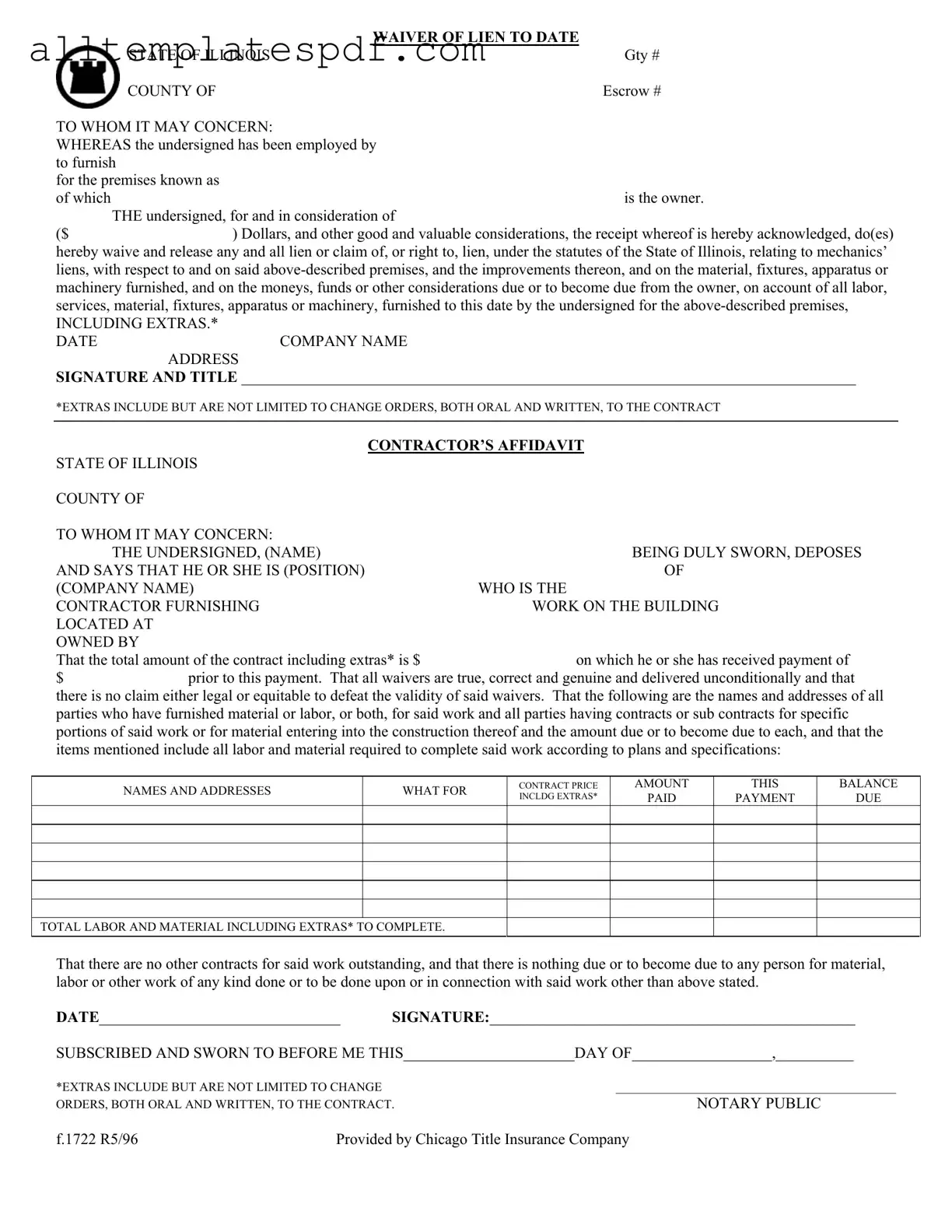Filling out the Chicago Title Waiver Format form can be straightforward, but several common mistakes can lead to complications. One significant error is failing to include the correct company name. The form requires the name of the entity providing the waiver. Omitting or misspelling this information can invalidate the waiver.
Another frequent mistake involves the date section. It is crucial to ensure that the date is current and accurately reflects when the waiver is executed. An incorrect date can create confusion regarding the timing of the waiver and may lead to disputes later on.
People often neglect to specify the amount in the consideration section. This amount should reflect the total value of the work performed. Leaving this blank or entering an incorrect figure can affect the enforceability of the waiver.
Additionally, the description of the premises must be clear and detailed. Vague descriptions can lead to misunderstandings about which property the waiver pertains to. It is essential to provide a precise address to avoid any ambiguity.
Many individuals fail to include all relevant signatures and titles. The form must be signed by the appropriate parties, and their titles should be included. Missing signatures can render the waiver ineffective and may lead to legal challenges.
Another common oversight is not properly documenting extras. The waiver must account for any change orders or additional work performed. If extras are not mentioned, it could result in disputes over payments or claims later on.
People sometimes forget to list all contractors and subcontractors involved in the project. The form requires a comprehensive list of all parties who provided labor or materials. Omitting any names can lead to complications in the enforcement of the waiver.
In some cases, individuals misinterpret the need for a notary public signature. The waiver must be notarized to be legally binding. Failing to have it notarized can invalidate the document entirely.
Another mistake is neglecting to review the entire form for accuracy before submission. Simple typos or errors can lead to significant issues. A thorough review can prevent these mistakes from becoming problematic.
Lastly, people may not keep a copy of the completed waiver for their records. Retaining a copy is essential for future reference and can serve as proof of the waiver should any disputes arise. Proper documentation is key to protecting one’s interests.
